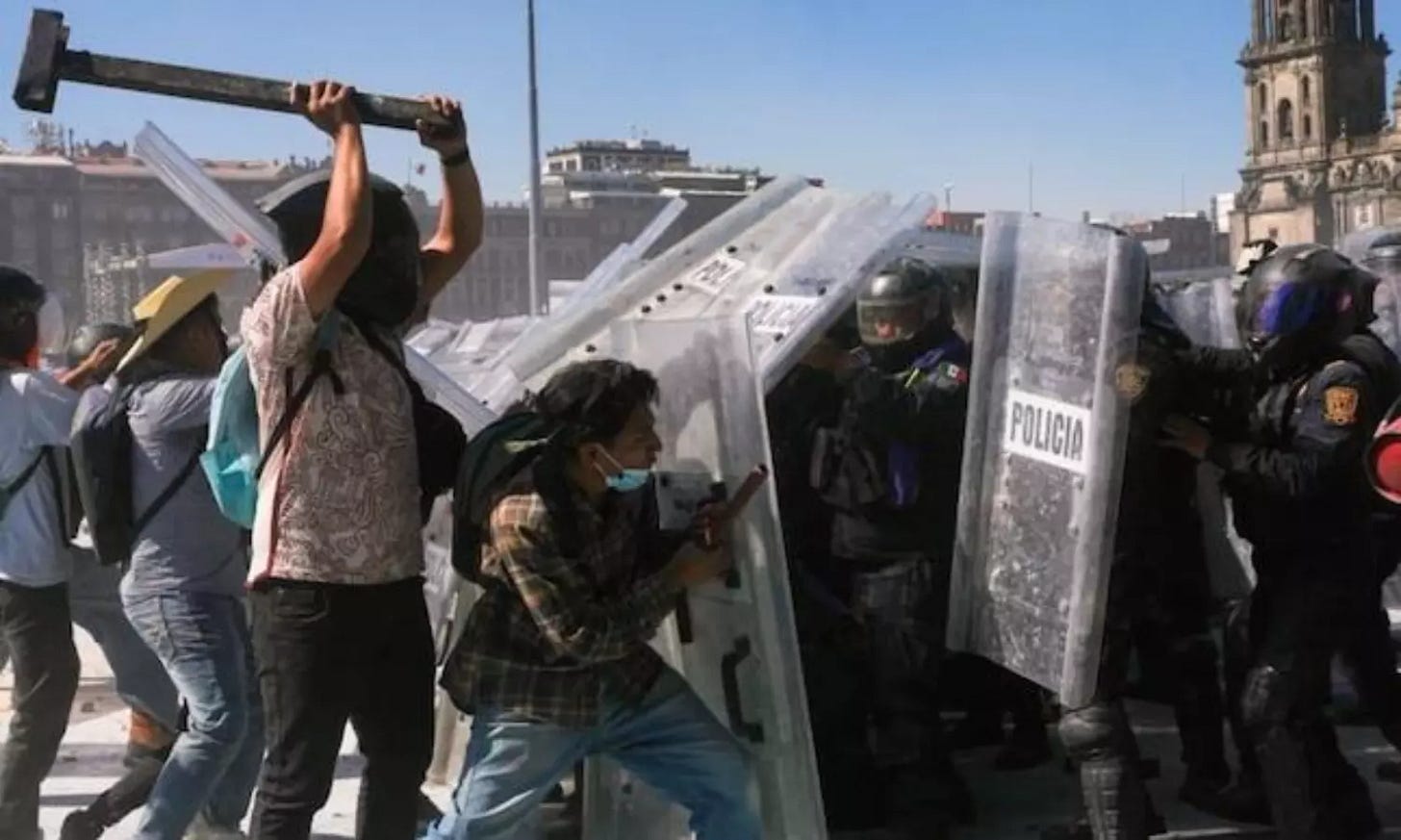What happens when Gen Z has nothing to lose
A young generation who feels the future has been denied to them can topple the old order. But they rarely control what rises in its place, making them useful pawns as a new order emerges.
Generational change is often understood as something slow and gradual — an evolution shaped by institutions, softened by time, and guided by norms that hold society together. Yet a quick look at history tells a different story.
When a large cohort of young people comes of age, believing the world ahead of them is unequal, corrupt, and offers little of value to their future, the results are rarely gentle. A youth bulge with no future becomes a fuse, and once lit, it doesn’t burn slowly.
This pattern is older than nation-states themselves, and it reappears whenever the same pressures converge: too many young people, too few paths to a life of meaning, too much corruption at the top, and a political order determined to protect its privileges rather than adapt. When those forces collide, the young stop believing the system can be repaired. They begin to imagine that only rupture can open a path forward.
Where they hold demographic power, revolt often takes to the streets. Where they do not, it can often surface as an ideological insurgency at the ballot box.
Nepal reached its breaking point earlier this year, when the government abruptly banned 26 major social media platforms. For the country’s young people — nearly a third of the population — the ban was not an isolated act but the culmination of years of corruption, stalled mobility, and elite privilege.
The September 2025 protests grew with astonishing speed. Tens of thousands poured into the capital, Kathmandu, demanding accountability. When demonstrators attempted to breach parliament grounds, police responded with tear gas, rubber bullets, and live ammunition. Government buildings were vandalized or set ablaze, dozens were killed, and within days the government lifted the ban and the prime minister resigned. The uprising was not just about digital censorship; it was the eruption of long-suppressed frustration among a generation that sees no future in the system they inherited.
Mexico now stands on a similarly unstable threshold. One-quarter of its population belongs to a generation raised amid inequality, cartel violence, and institutional decay. Over the past several weeks, protests under the banner “Generation Zeta” have spread from Tijuana to Oaxaca, fueled by anger at corruption and the sense that political systems no longer serve them.
The immediate spark was the November 1 assassination of Carlos Manzo, the vocal, anti-cartel mayor of Uruapan — a killing that shocked even a country accustomed to violence. For many young Mexicans, Manzo’s death was proof that the political system could no longer even protect those who governed it, let alone the people it claimed to serve. Protests escalated into ongoing violent clashes in Mexico City, where police have deployed tear gas, more than 100 officers have been injured, and dozens of civilians detained.
Young Mexicans have been losing faith in the existing order for years. According to OECD figures, nearly one in five were not in employment, education, or training in 2023 — a striking measure of social stagnation. Their support for sweeping change is a fight for survival. They do not believe the institutions built by their elders can deliver safety, dignity, or hope. And, increasingly, they are no longer willing to wait for reform.
Even in the United States — where revolt looks different — the same generational logic is taking hold. The 2025 New York City mayoral race revealed a quiet but unmistakable insurgency. Youth turnout surged to levels rarely seen in municipal elections, and young voters overwhelmingly backed a candidate who offered not only policy shifts but an entirely different language for describing their lives. Similar patterns appeared in New Jersey, Virginia, and California, where young voters embraced structural reforms by decisive margins. Their choices reflect a rising willingness to abandon the assumptions that shaped American life for the past century.
The real question, however, is not whether the young can break a political order — they clearly can — but who steps into the vacuum afterward? The French and Iranian revolutions both offer instructive warnings. In 18th-century France, the vast youth cohort that filled the streets with demands for liberty, equality, and fraternity ultimately cleared the way for Napoleon, whose rule proved more authoritarian than the monarchy he replaced. In 1970s Iran, the young activists who risked their lives to topple the Shah saw their revolution captured by the clerical establishment, which built a system even more restrictive than the one they had destroyed.
Youth-driven revolutions excel at dismantling the old world, but rarely at planning and executing the governance of a new one. Their energy opens the breach, but that void is almost always filled by those better organized, more disciplined, and less sentimental (or perhaps naïve). The world that emerges afterward is usually shaped by groups who have long been waiting in the wings, ready to seize the moment and move history forward, but not necessarily in the direction envisioned by those pushing for change.
The United States is not exempt from these forces, though its youth revolt currently expresses itself through ideology rather than street upheaval. American Gen Z does not have the demographic weight of young Nepalis or Mexicans, and the country is not yet brittle enough for the kind of rupture seen in Kathmandu. But the system still offers the young a narrow channel — the vote — and they are using it with increasing determination.
The ideological shape of that vote reflects the same emotional and material pressures driving youth unrest elsewhere. As Patrick Wood observed in a recent Collapse Life interview, younger generations are turning toward technocracy or socialism not just because they’ve been indoctrinated in school to believe in the evils of ___X___: fill in the blank: capitalism, white supremacy, transphobia, toxic masculinity, or some combination thereof. It’s also the profound sense of abandonment.
“They have no hope at all,” Wood said. “They’re looking to the future to provide something for them, and they can’t find it. Capitalism is on the chopping block. Democracy is on the chopping block… They see no hope in these things, so they’re going to try something new.” His assessment captures a mood that voting patterns only faintly reveal: young Americans are not just becoming radicals for the sake of ideology; they are responding to a future that feels structurally closed.
The difference between the United States and places like Nepal or Mexico is not that American youth are more gratified. It’s that the American political system retains just enough elasticity to absorb some of their anger, giving them a place to channel frustration before it becomes more explosive. But elasticity is not permanence. When economic mobility continues to erode, when housing and healthcare remain out of reach, when work loses its promise and institutions lose their legitimacy, ideological revolt can sharpen into something the existing system can no longer contain.
Every era believes its institutions are sturdier than they actually are. Yet history is clear: when a large, frustrated generation concludes that the future is being withheld from them, they’ll find a way to pry it loose. Sometimes the breach is violent, sometimes electoral, sometimes ideological. But once a generation stops believing the old world will deliver a place for them, the old world rarely survives intact.




